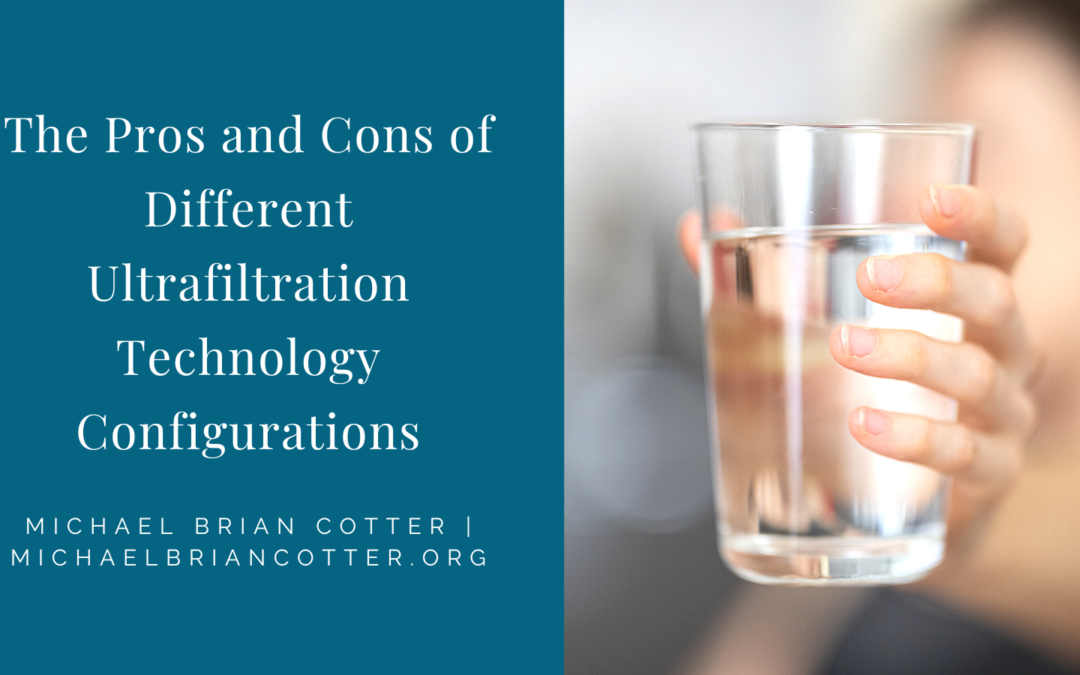There are many different types of Ultrafiltration technology that you can choose from based on the source water quality and the application that you need. There are several various aspects that you should consider when deciding between different types of Ultrafiltration technology. In this article, we’ll talk about the pros and cons of different UF technology configurations.
Dead-end flow
In a dead-end flow configuration, the water you’re filtrating will flow perpendicularly towards the membrane layer. That way, the molecules and small particles flow through the membrane’s pores to the opposite side, leaving the larger matter to build up in a sort of cake layer on the membrane surface.
Pros
- Low energy– there is no unnecessary energy flowing through the technology; all of the necessary power is spent on the water flowing through the membrane
- Recirculation isn’t necessary– the solids that can’t flow through the system will build up in a cake layer on the membrane instead of pushing through, superseding the need to recirculate the water.
- Smaller carbon footprint– because there’s no need to recirculate the water, no unnecessary pumps, lines, or valves are needed, negating the need for extra energy.
Cons
- Back Washing– because the solids are built up on the membrane, the technology needs to be cleaned more frequently, leading to higher costs than other filtration systems
- Membrane flux decreases– naturally, as the cake layer builds up, the membrane’s flux decreases, leading to a higher chance that the flow of water will be blocked
Cross flow
While dead-end flow deals with water flow perpendicular to the membrane’s surface, cross flow works parallel to the surface. This way leads to water passing through the membrane with some bigger solids sticking to the surface and being pushed down toward the end of the vessel.
Pros
- Shear force– the flow of the water causes a shear force over the surface of the membrane, pushing the excess solids off and making for a cleaner membrane
- More consistent flux– because of the thin cake layer, the flux is more consistent than a dead-end flow
- Longer lifespan– because of the thinner cake layer and the shear force keeping the membrane clean, the membrane itself is kept in a better condition, lowering the amount of costs it’d take to clean the membrane.
Cons
- Recirculation is necessary– unfortunately, because not all of the water flows through the membrane at once, recirculation is necessary to ensure that you get all the water possible
- Higher energy needed– because of both the transmembrane pressure and the necessary force that’s needed to move the water and recirculate the fluid across the membrane, more energy is required in order to function successfully
There are many pros and cons to look at when looking for a specific type of Ultrafiltration technology configuration. The dead-end flow requires a lower amount of energy, no recirculation, and a smaller footprint, but it’s more costly to function and has a higher chance of a decrease in membrane flux. Cross flow uses shear forces to keep the membrane clean, the flux is consistent with a higher membrane lifespan but needs more energy to function, and recirculation of water is needed.
